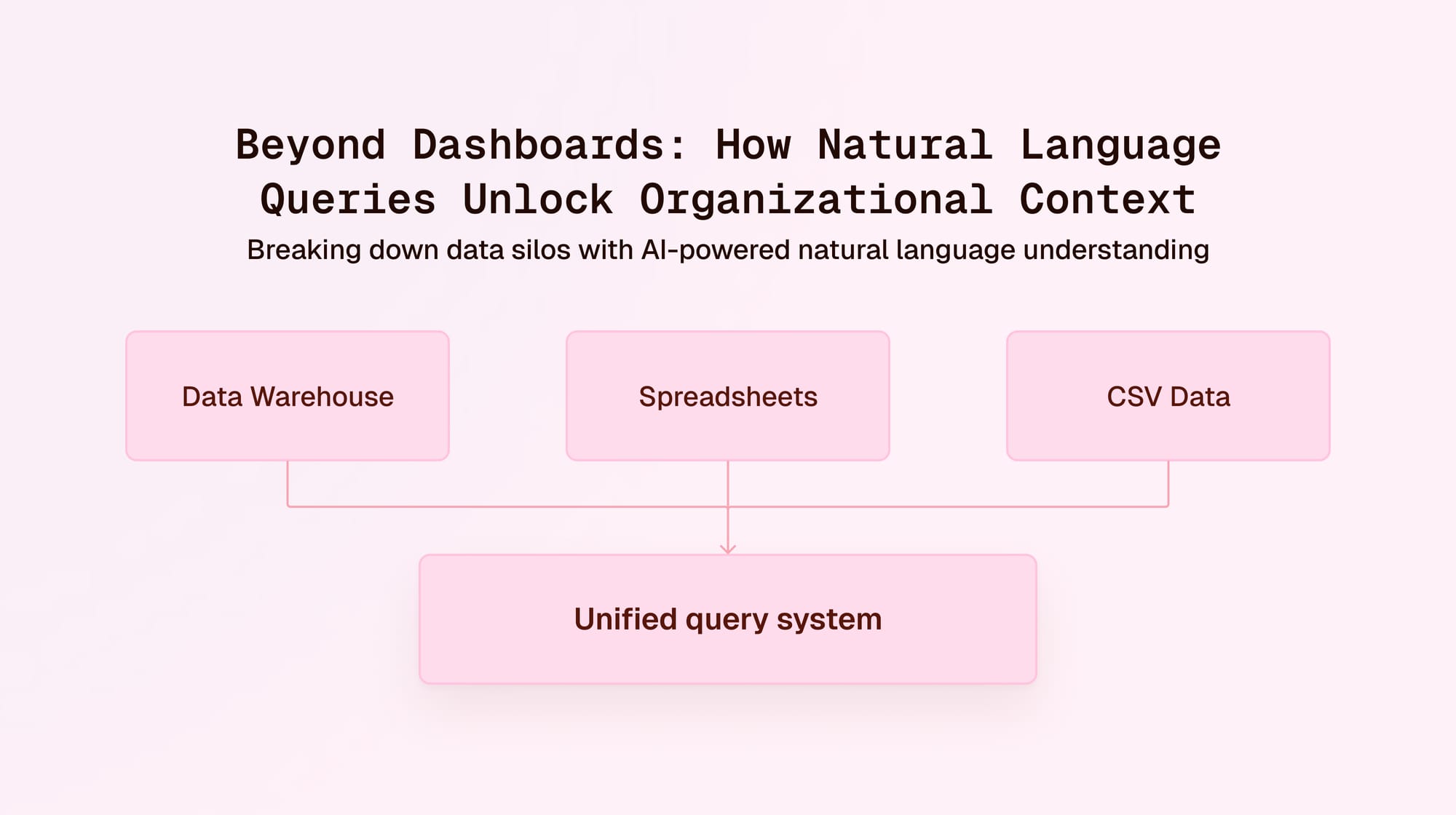Beyond Dashboards: How Natural Language Queries Unlock Organizational Context

Most companies sit on disconnected data silos – warehouses filled with business metrics, spreadsheets tracking team operations, and CSVs capturing ad-hoc analyses. The challenge isn't just accessing this data; it's making it work together to answer real business questions.
While traditional BI tools offer preset dashboards, they fall short when questions cross system boundaries.
The Infrastructure Layer
At Dust, we've built a unified querying system that breaks down these barriers. The architecture is straightforward:
- Data Unification: Whether it's a Snowflake warehouse, Google Sheet, or CSV, data sources are normalized into a consistent format. We augment the schema with metadata that helps models understand the underlying structure.
- Dual-Path Execution:
- For warehouses: Direct SQL execution with proper permissions
- For files: Spin up an in-memory SQLite database for cross-source queries
- Visualization Pipeline: Results are stored as CSV files, enabling lightweight component generation without token bloat.
The key innovation isn't the SQL generation – it's the infrastructure connecting company data, permissions, and visualization in a coherent system.
Breaking the Context Barrier
Traditional BI tools operate in silos. A sales dashboard might pull from Salesforce, but it can't easily incorporate data from your HR system about team structure. Our approach is different:
SELECT e.name, e.role, u.message_count
FROM employees e
LEFT JOIN usage_data u ON e.email = u.user_email
ORDER BY u.message_count DESC
LIMIT 5This simple query, demonstrated in our talk, combines HR data from a Google Sheet with usage metrics from a CSV – something impossible in traditional setups.
The SQL is generated by the model, but the magic is in the infrastructure making it possible.
The Permission Foundation
Cross-source querying raises obvious security concerns. We've built a permission system that works at two levels:
- Space-level access: Data sources are grouped into spaces with clear access controls
- Query-level enforcement: Permissions are checked at query time, not just at data access
This dual-layer model lets organizations safely expose powerful querying capabilities while maintaining strict data governance.
Beyond Natural Language BI
While we've achieved natural language BI, this is just the beginning. The real shift is from static dashboards to dynamic data exploration powered by context-aware AI.
Our exponential usage growth shows this resonates. Teams using Dust for data analysis report moving from hours spent building dashboards to minutes spent asking questions. The efficiency gain isn't marginal – it's transformative.
Looking Forward
We're building more than a querying tool. Like Windows provided universal UI primitives, we're creating universal data primitives that let AI agents and humans work together effectively.
The future of enterprise data isn't about better dashboards – it's about breaking down the walls between data sources and letting intelligence flow freely.
Want to experience this future? We're hiring engineers passionate about building the infrastructure layer for the AI-driven enterprise.

